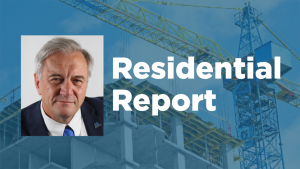The fall session of the Ontario legislature opened with a speech from the throne that left key players in the construction industry questioning not what was included in the speech, but what was left out.
With the next election roughly two years away in 2018, the Ontario Liberal government is now halfway through its mandate and used the speech as a way to reboot, reset priorities and outline its agenda.
A member bulletin issued by the Ontario Sewer and Watermain Construction Association stated the speech reiterated a number of long-held positions on the infrastructure agenda, including the continued investment in transportation and health care infrastructure in 2017, but lacked other details.
"While it was billed as a ‘fresh start’ for the government, the speech lacked a lot of substantive changes from the long-held Liberal positions under Premier Wynne, aside from the hydro rate reductions," reads the bulletin.
"On the infrastructure file, priorities will remain the same, while a number of government reviews and consultations are wrapping up on future investment criteria around asset management, long-term planning and climate resiliency."
The throne speech, entitled A Balanced Plan to Build Ontario Up for Everyone, was read by Lieutenant Governor Elizabeth Dowdeswell on Sept. 12.
In it, the government outlines a few new initiatives geared towards helping Ontarians save money. This includes legislation that would rebate an amount equal to the provincial portion of the Harmonized Sales Tax (HST) directly on consumers’ electricity bills, an eight per cent savings for Ontario residents and small businesses, effective Jan. 1, 2017.
That would save the average household about $130 a year, more in rural areas.
Another highlight of the speech was the government’s pledge to create 100,000 new licensed daycare spaces across the province for children up to four years old.
A large part of the speech focused on reiterating the government’s priorities for the next two years.
"From our perspective, the fact that they reiterated their commitment to infrastructure was all we were really looking for," said Andy Manahan, executive director of the Residential and Civil Construction Alliance of Ontario.
"We didn’t expect any new announcements that would normally happen in a budget, but this reaffirms that infrastructure is still important."
He said the speech outlined some important points about the province’s plan to invest in roads, transit and infrastructure — about $160 billion over 12 years — building and repaving 5,000 kilometres of roads and building and repairing more than 750 bridges.
"Just the fact that it is still on the agenda is positive," said Manahan.
David Frame, director of government relations with the Ontario General Contractors Association (OGCA), said the throne speech failed to provide updates on key initiatives in the construction industry.
"I guess what I’m concerned with is what isn’t in," said Frame. "They didn’t commit to move forward this session with the recommendations of the Dean report. And there was no mention of Construction Lien Act reform (the Reynolds report). We know we are going to see the paper in a couple of weeks but there was no commitment to moving ahead with reform on that."
In his November 2015 report, Tony Dean made a number of recommendations regarding key aspects of the Ontario College of Trades and it remains to be seen whether or not the government plans to implement any of those changes. Frame was not surprised by the absence of those two items in the speech.
"The purpose of the throne speech was to provide good news and those items are both controversial. It’s likely they weren’t in because they didn’t make the good news bar," he said.
He did notice a commitment to building schools.
"We are being told Infrastructure Ontario will have a pipeline for us probably by next month, so that is a little bit of what we can expect to see in the pipeline," said Frame, referring to special notices of upcoming projects.
OGCA president Clive Thurston was concerned that the items that were not mentioned in the throne speech, such as the Dean and Reynolds’ reports, would be off the agenda after the house was prorogued.
"We do know from talking to the premier that all of these pieces, though they technically died, will be back and will continue," said Thurston. "She does know that things like the lien act, the Ontario College of Trades and safety are big factors for our industry because she also knows that our industry is the major economic engine that keeps this province afloat."
The OGCA also had the opportunity to sit down with Infrastructure Minister Bob Chiarelli.
"We heard from them at our AGM that there is work coming, there is a pipeline coming in October and there should be plenty of work starting to hit the street shortly," Thurston stated. "I think the throne speech gave them a chance to take a breath, put things in perspective and now we’re ready to move forward."
The move to take off the provincial component of the HST on the hydro bill was a populous one, Manahan explained, as it has a wider benefit for consumers than other projects. However, rates could increase at some point, he pointed out.
"With at least a portion of Hydro One being under direct control of the private sector, we’re bound to see at some point that there will be an increase of rates as well, so some of these rebates that are being offered could end up being a wash overall," said Manahan.
He said the throne speech did not shed light on how this measure will fit in with the government’s Climate Change Action Plan, which puts emphasis on conservation, and added the energy policy right now seems to be "a bit fragmented." He suggested it might have been more prudent for the province to provide incentives for certain conservation programs. He said the province was going to have discussions with the federal government on eliminating the HST altogether on zero emissions vehicles and he is wondering if that is still an option and if they’re going to try to and provide full tax relief for the hydro bill as well.
He also questioned how this might affect plans for the Liberals to balance the budget by 2018.
"The Liberals in Ottawa are trying to balance the budget as well so it’s unlikely they’re going to provide that kind of tax relief," said Manahan. "The other question of course is if this particular hydro relief program is going to cost a billion dollars per year, what does that do with respect to the Queen’s Park plan to balance the budget by 2017-18. So I think that will be very challenging. Hopefully they will do the right thing, spend money wisely with respect to the infrastructure which will provide a good rate of return so we can continue growing the economy."











Recent Comments
comments for this post are closed